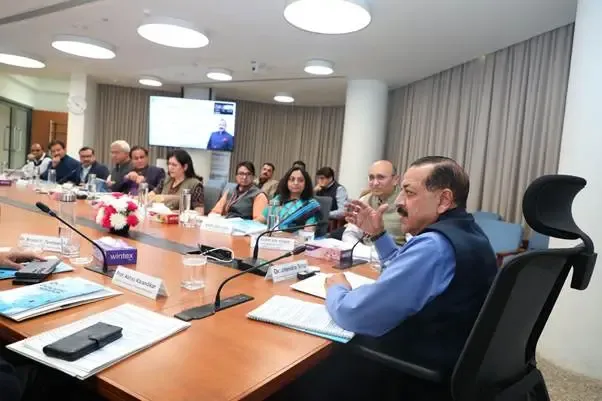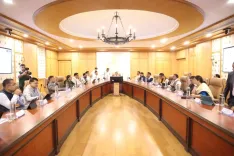How is the EIR Programme Transforming India’s Biotechnology Innovation Ecosystem?

Synopsis
Key Takeaways
- The EIR Programme nurtures a new wave of scientist-entrepreneurs.
- It bridges the gap between research and entrepreneurship.
- BRIC serves as a model for institutional collaboration.
- AI is being integrated into biological research.
- Interdisciplinary partnerships are crucial for innovation.
New Delhi, Nov 26 (NationPress) The increasing appeal of the Entrepreneur-in-Residence (EIR) Programme among emerging startups, innovators, and researchers is transforming India’s biotechnology innovation landscape, stated Union Minister of State for Science & Technology, Jitendra Singh, on Wednesday.
While addressing the third Annual General Meeting of the Biotechnology Research and Innovation Council (BRIC), he noted that the EIR initiative is effectively nurturing a fresh wave of scientist-entrepreneurs who merge academic proficiency with a market-focused, problem-solving mindset in research.
The minister highlighted that the EIR programme aims to fill the void between research and business, drawing substantial involvement from private enterprises and venture capitalists, thus facilitating the translation of technology and fostering startup formation within India’s public research and development ecosystem.
"The Entrepreneur-in-Residence programme has injected new energy into the entrepreneurial spirit of our research institutions. It motivates young scientists not merely to innovate but also to implement - to convert their concepts into breakthroughs that impact lives and propel India’s biotech narrative," he remarked.
Reinforcing BRIC’s significance as a template for institutional collaboration, the minister asserted that the establishment of the Council represents one of the most triumphant structural reforms in the realm of India’s scientific framework.
"BRIC was the inaugural initiative within the entire governmental framework to unify multiple research institutions under one cohesive umbrella," he observed, adding that this collaborative model has inspired similar efforts across various scientific ministries.
Dr. Singh further underscored the necessity of broadening interdisciplinary and cross-sector collaborations to expedite discovery and innovation.
He recommended extending BRIC’s training initiatives to encompass intra-science, extra-science, and extensive collaborations, linking diverse scientific fields with educational institutions and private sector partners.
He pointed out ongoing trials and projects conducted in conjunction with non-governmental organizations like the Christian Medical College and Apollo Hospitals as successful illustrations of such integration.
Moreover, he accentuated the incorporation of Artificial Intelligence (AI) within biological research, asserting that India is already syncing with global best practices in AI-driven biosciences.
He urged researchers to enhance outreach and collaboration by creating informative content and bolstering digital communication between institutions.









